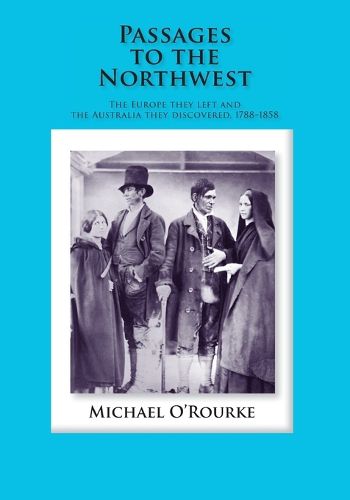Readings Newsletter
Become a Readings Member to make your shopping experience even easier.
Sign in or sign up for free!
You’re not far away from qualifying for FREE standard shipping within Australia
You’ve qualified for FREE standard shipping within Australia
The cart is loading…






This book traces the author’s settler-forebears and their migration to new lives in Australia.
They sailed variously to penal settlements or free farms or the petit-bourgeois townships that for long ‘clung timorously’ to the coast.
Some forebears sailed out from Ireland. There Catholic rebels and their French allies had been crushed by a Protestant Ascendancy. Worse, a potato
famine was to kill hundreds of thousands. Other ancestors came out from Scotland, where lowland farmers were quietly creating an epitome of
capitalist farming. And from England. The masses there would manage slowly to force their political masters to submit to popular election. And
from Germany, where no master was ready to give way to the will of the people.
New Holland of course was entirely Aboriginal land in 1788. From 1815, however, drovers and shepherds began to take herds of cattle and sheep into a vast interior. The ‘First Australians’ gave them some trouble before submitting to an alien domination.
By 1860 most of the author’s ancestors had made their way to the inner northwest of New South Wales. They settled as publicans and sheep farmers on the rich and largely treeless grasslands known to its former Aboriginal owners as Gabawaan Gamilaraay or ‘greater Gamilaraay’- today’s Liverpool Plains. There by 1860 a few slab huts had been converted to drinking houses-the seeds of future village life. And already the campsites of the dray-men and their bullocks were starting to look like riverside towns.
$9.00 standard shipping within Australia
FREE standard shipping within Australia for orders over $100.00
Express & International shipping calculated at checkout
Stock availability can be subject to change without notice. We recommend calling the shop or contacting our online team to check availability of low stock items. Please see our Shopping Online page for more details.
This book traces the author’s settler-forebears and their migration to new lives in Australia.
They sailed variously to penal settlements or free farms or the petit-bourgeois townships that for long ‘clung timorously’ to the coast.
Some forebears sailed out from Ireland. There Catholic rebels and their French allies had been crushed by a Protestant Ascendancy. Worse, a potato
famine was to kill hundreds of thousands. Other ancestors came out from Scotland, where lowland farmers were quietly creating an epitome of
capitalist farming. And from England. The masses there would manage slowly to force their political masters to submit to popular election. And
from Germany, where no master was ready to give way to the will of the people.
New Holland of course was entirely Aboriginal land in 1788. From 1815, however, drovers and shepherds began to take herds of cattle and sheep into a vast interior. The ‘First Australians’ gave them some trouble before submitting to an alien domination.
By 1860 most of the author’s ancestors had made their way to the inner northwest of New South Wales. They settled as publicans and sheep farmers on the rich and largely treeless grasslands known to its former Aboriginal owners as Gabawaan Gamilaraay or ‘greater Gamilaraay’- today’s Liverpool Plains. There by 1860 a few slab huts had been converted to drinking houses-the seeds of future village life. And already the campsites of the dray-men and their bullocks were starting to look like riverside towns.